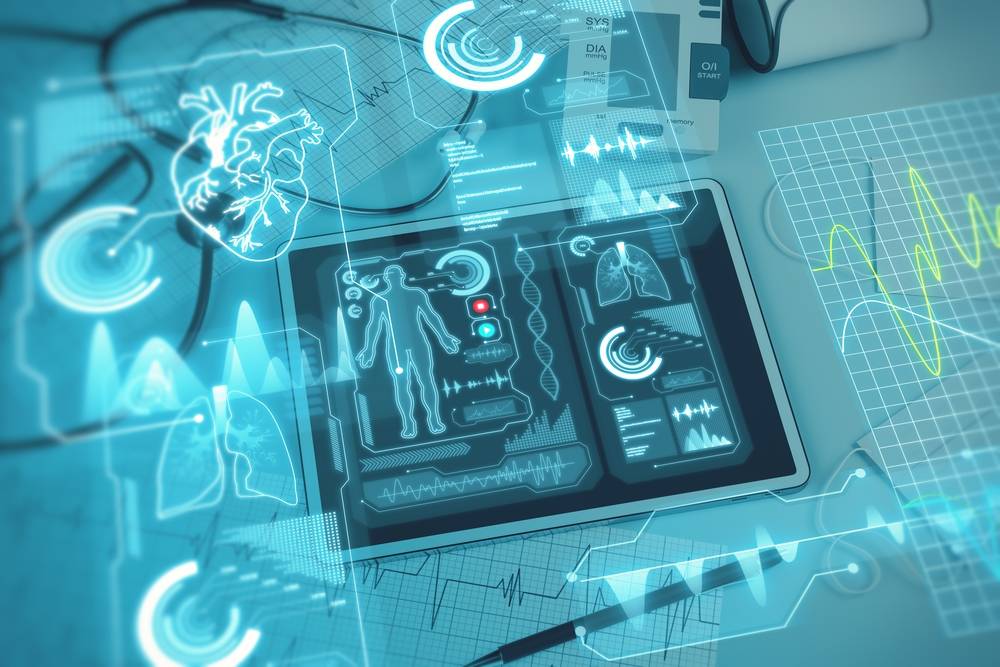The era of EU HTA has officially begun—but how will medical devices be affected?
Current status of the EU HTA rollout

|
MDs classified as Class IIb and III |
Outlined in Article 51 of Regulation (EU) 2017/745 on Medical Devices (MDR), for example:
|
|
IVDs classified as Class D |
Specified in Article 47 of Regulation (EU) 2017/746 on In Vitro Diagnostic Medical Devices (IVDR): Devices intended to be used for
|
|
Expert panel consultation |
For MDs: Defined in Article 54 of the MDR For IVDs: Defined in Article 48(6) of the IVDR |
Implementing act |
Deadline |
Status |
|
Procedural rules for JCA of medicinal products |
Q1−Q2 2024 |
Adopted 23 May 2024 |
|
Procedural rules on cooperation with the EMA |
Q3 2024 |
Adopted 18 October 2024 |
|
Procedural rules for the management of conflict of interest |
Q3 2024 |
Adopted 25 October 2024 |
|
Procedural rules for JSC of medicinal products |
Q3 2024 |
Adopted 18 November 2024 |
|
Procedural rules for JSC of MDs and IVD MDs |
Q1 2025 |
Adopted 24 January 2025 |
|
Procedural rules for JCA of MDs and IVD MDs |
Q2 2025 |
In preparation |
Key: EMA – European Medicines Agency; IVD – in vitro diagnostic; JCA – Joint Clinical Assessment; JSC – Joint Scientific Consultation; MD – medical device.
Insights from the implementing act on JSCs for MDs and IVDs
Parallel consultations
The implementing act details that companies can request JSCs to take place in parallel with existing consultation with MD expert panels (see Figure 1). In these cases, the HTA secretariat, which facilitates the JSCs, and the EMA, which acts as secretariat for the expert panel, should communicate relevant information to ensure that both consultations are coordinated effectively. To facilitate the preparation of a timely and high-quality briefing package, companies are encouraged to seek assistance from the assessor and co-assessor from the JSC subgroup during this new process, as the process of requesting a parallel consultation on clinical development plans represents a new pathway for MD manufacturers. They should further submit the same documentation to both the HTA secretariat and the expert panel when JSCs occur alongside expert panel consultations to streamline operations and minimise administrative burdens.

Requesting a consultation
Upon submitting their request for a JSC, companies may also request a meeting with the assessor, co-assessor, other members of the JSC subgroup, and relevant staff from the HTA secretariat to seek assistance relevant to the preparation of the briefing package. The manufacturer will receive a timetable detailing the deadlines for submission of the briefing package from the HTA secretariat. Finally, during the consultation, besides representatives of the manufacturer, the assessor, and co-assessor, as well as other representatives of the JSC subgroup, individual clinical, patient, and other relevant experts (“individual experts”) identified by the HTA secretariat and staff members of the HTA secretariat supporting the JSC subgroups, will participate. For parallel consultations, the advisor of the expert panel consultation and staff members of the EMA supporting the expert panel will participate as well.

Outcome document
Outstanding documents
Document name |
Deadline |
Status |
|
Procedural guidance for JSC on MDs and IVD MDs |
Q1 2025 |
In preparation |
|
Format and template of requests from health technology developers for JSC – MDs and IVD MDs |
Q1 2025 |
In preparation |
|
Format and template for the dossier submitted by the health technology developer for JSC – MDs and IVD MDs |
Q1 2025 |
In preparation |
|
Format and template for the JSC outcome document MDs and IVD MDs |
Q1 2025 |
In preparation |
|
Guidance for the selection of JSC for MDs and IVD MDs |
Q2 2025 |
In preparation |
|
Procedural guidance on JCA for MDs and IVD MDs |
Q3 2025 |
In preparation |
|
Guidance for the selection of MDs and IVD MDs for JCA |
Q3 2025 |
In preparation |
|
Guidance on filling in the JCA dossier template – MDs and IVD MDs |
Q3 2025 |
In preparation |
|
Guidance on filling in the JCA report template – MDs and IVD MDs |
Q3 2025 |
In preparation |
Key: IVD – in vitro diagnostic; JSC – Joint Scientific Consultation; MD – medical device.
Conclusion
Sources
- European Commission. Regulation (EU) 2017/745 of the European Parliament and of the Council of 5 April 2017 on medical devices, amending Directive 2001/83/EC, Regulation (EC) No 178/2002 and Regulation (EC) No 1223/2009 and repealing Council Directives 90/385/EEC and 93/42/EEC. 2017. Accessed 10 January 2025. https://eur-lex.europa.eu/eli/reg/2017/745/oj/eng
- European Commission. Regulation (EU) 2017/746 of the European Parliament and of the Council of 5 April 2017 on in vitro diagnostic medical devices and repealing Directive 98/79/EC and Commission Decision 2010/227/EU. 2017. Accessed 10 January 2025. https://eur-lex.europa.eu/eli/reg/2017/746/oj/eng
- European Commission. Regulation (EC) 2021/2282 of the European Parliament and of the Council of 15 December 2021 on Health Technology Assessment and Amending Directive 2011/24/EU. 2021. Accessed 10 January 2025. https://eur-lex.europa.eu/legal-content/EN/TXT/PDF/?uri=CELEX:32021R2282
- European Commission. Health technology assessment – joint clinical assessments of medical devices. 2024. Accessed 10 January 2025. https://ec.europa.eu/info/law/better-regulation/have-your-say/initiatives/13707-Health-technology-assessment-joint-clinical-assessments-of-medical-devices_en
- European Commission. Health technology assessment – joint clinical assessments of medicinal products. 2024. Accessed 10 January 2025. https://ec.europa.eu/info/law/better-regulation/have-your-say/initiatives/13708-Health-technology-assessment-joint-clinical-assessments-of-medicinal-products_en
- European Commission. Health technology assessment – procedural rules for assessing and managing conflicts of interest. 2024. Accessed 23 September 2024. https://ec.europa.eu/info/law/better-regulation/have-your-say/initiatives/13751-Health-technology-assessment-procedural-rules-for-assessing-and-managing-conflicts-of-interest_en
- European Commission. Health technology assessment – cooperation with the European Medicines Agency. 2024. Accessed 10 January 2025. https://ec.europa.eu/info/law/better-regulation/have-your-say/initiatives/14164-Health-technology-assessment-cooperation-with-the-European-Medicines-Agency_en
- European Commission. Health technology assessment – joint scientific consultations on medical devices & in vitro diagnostic medical devices. 2024. Accessed 10 January 2025. https://ec.europa.eu/info/law/better-regulation/have-your-say/initiatives/13752-Health-technology-assessment-joint-scientific-consultations-on-medical-devices-in-vitro-diagnostic-medical-devices_en
- European Commission. Health technology assessment – joint scientific consultations on medicinal products for human use. 2024. Accessed 10 January 2025. https://ec.europa.eu/info/law/better-regulation/have-your-say/initiatives/13759-Health-technology-assessment-Joint-scientific-consultations-on-medicinal-products-for-human-use_en
- European Commission. Implementation rolling plan. Updated January 2025. Accessed 10 January 2025. https://health.ec.europa.eu/document/download/397b2a2e-1793-48fd-b9f5-7b8f0b05c7dd_en
- EMA. New EU rules for health technology assessments become effective. 2025. Accessed 28 January 2025. https://www.ema.europa.eu/en/news/new-eu-rules-health-technology-assessments-become-effective
- Member State Coordination Group on Health Technology Assessment (HTA CG). Annual Work Programme 2025. V1.0. 28 November 2024. Accessed 10 January 2025. https://health.ec.europa.eu/document/download/9f1d2ac8-3515-4be1-9a29-db3d9ffb5201_en?filename=hta_hatcg_awp_en.pdf
This article summarises Cencora’s understanding of the topic based on publicly available information at the time of writing (see listed sources) and the authors’ expertise in this area. Any recommendations provided in the article may not be applicable to all situations and do not constitute legal advice; readers should not rely on the article in making decisions related to the topics discussed.
Cencora.com is providing automated translations to assist in reading the website in languages other than English. For these translations, reasonable efforts have been made to provide an accurate translation, however, no automated translation is perfect nor is it intended to replace human translators. These translations are provided as a service to users of Cencora.com and are provided "as is." No warranty of any kind, either expressed or implied, is made as to the accuracy, reliability, or correctness of any of these translations made from English into any other language. Some content (such as images, videos, Flash, etc.) may not be accurately translated due to the limitations of the translation software.
Any discrepancies or differences created in translating this content from English into another language are not binding and have no legal effect for compliance, enforcement, or any other purpose. If any errors are identified, please contact us. If any questions arise related to the accuracy of the information contained in these translations, please refer to the English version of the page.




